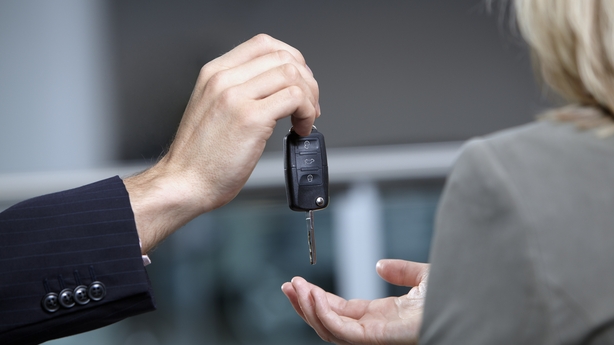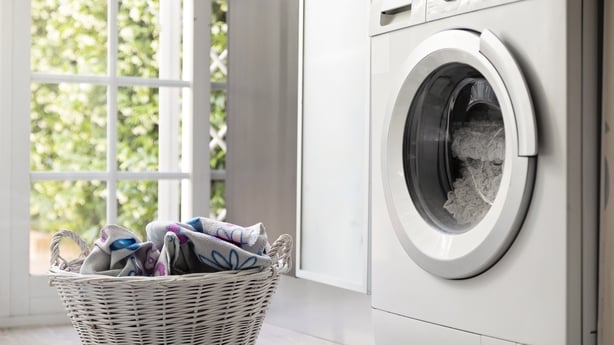Last month the Central Statistics Office updated their 'Inflation by Household' report.
It confirmed that those on lower incomes actually face a higher rate of inflation than the average, while those on higher incomes endured a lower-than-average increase.
The report explained that, in June, the overall rate of inflation was 9.1% – but for lower income households it was actually as much as 10.3%. Meanwhile, for higher income households, the rate was 8.2%.
And the reason for that divide is relatively simple – if you’re on a lower income, the essentials take up a bigger percentage of your budget.
As we know, it’s the essentials like food and energy that have seen the biggest increases. So if most of what you’re spending is going in that direction then what you’re paying out each month, relatively speaking, is going to see a bigger increase.
Connected to that is the fact that lower income households already had less disposable income after those essentials, and so less wiggle room when prices increase. A well-off person might not even notice a €20 rise in their shopping bill but, for a less well-off person, that could leave them with nothing to spare.
But the fact that things are more expensive for the less well-off isn’t a phenomenon confined to our current inflation bubble – it is a well-established fact of life.
The reality is that the economy as a whole is weighted against the less well-off – not just those facing poverty, but really just about anyone who isn’t rich.
How do you mean?
We need your consent to load this rte-player contentWe use rte-player to manage extra content that can set cookies on your device and collect data about your activity. Please review their details and accept them to load the content.Manage Preferences
A good way of illustrating this is to imagine you’re buying a car.
Some might say that’s a luxury, others will say it’s an essential purchase – but it’s a good representation of the many ways that the less well-off are automatically at a disadvantage to someone who has a lot of money to spare.
After shopping around, you settle on the cheapest model of one of the most popular cars in the country at the moment, which would currently set you back €36,345.
If you’re very well off, you likely have access to that kind of money and are in a position to hand it over in one go. In which case, the car costs you €36,345.
But, of course, if you’re like the average consumer you have to find a way to fund the purchase, which generally means getting in to debt.
A popular form of cars debt are Personal Contract Plans – or PCPs. This is were you put down a deposit, sometimes in the form of an old car being traded in, make monthly repayments a period, and then face a lump sum at the end of the term in order to own the car outright.
The exact structure differs depending on a number of factors, including the car’s value, how much of a deposit you can put down and how long the term of the contract is, but let’s look at the typical deal offered on our €36,345 car.
The dealership in question suggests putting down a deposit of around €12,700, followed by monthly repayments of €326 for three years. That adds up to €11,750.
At the end of that, you’ll face a €16,355 bill to own the car outright.
If you add all of that together, you’re paying a total of €40,826 euro for your €36,345 euro car – so almost €4,500 more than what the car is worth.
That effectively means that, if you don’t have the money to buy the car out-right, there’s a more-than 12% premium added to the price.
Bear in mind, too, you may not have that €12,000 or €13,000 deposit, so you may have to borrow more to begin with. If you’re not well-off that €16,355 final payment is also going to be a challenge – so you may end up borrowing more to cover it, or flipping your current PCP deal into a new one.
All of that means more debt, and more interest costs.
Of course you could always avoid a PCP and get a bank or credit union loan – but based on what most providers offer you are still looking at somewhere in the region of €4,000-5,000 in interest over three years.
That may be a bit less if you have a decent deposit or trade in to bring the cost down – but either way you will have to pay well above the value of the car.
This kind of premium that comes with not having ready access to cash applies to many areas besides cars, too. It’s true of those who may borrow to go on holiday, undertake home improvements, or even buy the house itself.
What about finding a cheaper option?

The reality is that many will opt for a cheaper car – perhaps a second-hand one – in order to bring the cost of ownership down.
But that’s probably going to cost you more, albeit in a different way.
Even with a cheaper price you’ll probably still need to get into debt – even if it is less debt than before.
But the savings you make there may be lost on the road, because older or cheaper cars are generally less efficient, and so the running costs are higher.
If they’re less efficient there’s also a chance they’ll fall into a higher tax bracket, so that too will cost you more.
And of course they’re older, so there’s a greater chance that the maintenance costs will start to tick up as things start to go wrong with it.
Is that where the disadvantage ends?
No - because once you own your car you need to tax and insure it.
But if you decide to tax your car on a quarterly basis in order to spread out the burden, you have to pay a premium. That could be anywhere between €12 and €302, depending on the tax band.
Realistically, the vast majority of consumer cars sold today are in the A or B band, so the gap is more likely to be between €12 and €36, but it’s still putting people with less at a disadvantage.
And it’s a similar story for your insurance – most car insurers will offer a monthly option for your policy, but it costs more over the course of the year.
Running a number of quotes through some providers found a 5-9% premium on the cost of a monthly repayment rather than an annual lump sum.
That could translate to an extra €40-60 a year for the average full comprehensive policy, but it may mean hundreds extra for some, especially younger drivers.
After all, the higher a premium is to begin with the more likely it is that you need to break the cost up into a monthly repayment… but, by virtue of the fact that the premium itself is higher, the extra cost added on is much higher too.
Can the actual insurance itself disadvantage people too?

Yes it can – in a number of ways.
For example, your insurer will ask you where you keep your car overnight – are you parked in a locked garage, in the front garden, or on the road. The answer to that will have an effect on the price they quote you.
But, of course, the less well-off are less likely to be able to live in a property that has a private garage or even a front garden.
Or maybe the actual area they live goes against them.
Insurers rate different areas based on where they think there’s a greater chance of a car being broken into or stolen, and if you live in one of those areas, you pay more too.
Is buying cheap always a bad idea?
There’s a saying that when you buy cheap, you buy twice – because the cheap item is more likely to break after a short while, or not do the job it’s meant to do, and you’re going to have to pay again to replace it.
Of course there are always bargains to be had if you’re lucky and careful – and there are some products out there where at least part of the premium you’re paying is down to clever branding – but, in general, a more expensive item is going to be a better investment than a cheap one.
That’s true of everything from run-of-the-mill purchases like clothing, to once-in-a-while investments like appliances.
For example, a lot of appliances are made cheaper through the use of, say, plastic parts rather than metal ones – but they tend to break easily and are often hard or even impossible to replace.
Many people may have had an experience where a mechanic told them the cost of replacing this tiny part on their machine would actually be more than the cost of buying a new machine outright.
And the give-away is often the warranty that’s being offered – the cheap item will come with the standard one year, but the better brand is offering an extended warranty.
That’s a sign that the manufacturer is backing its quality – it knows that the product is so well-built that most people aren’t going to even need that extra warranty, so offering it won’t actually cost them much.
Of course many will be lucky and have a cheap appliance that has lasted a long time for them.
But it’s not just about the risk of it breaking, there are other ways that a cheaper appliance will cost you in the long run beyond repairs and replacements.
How?

Well cheaper appliances tend to be less efficient.
So if you have an older or a cheaper washing machine, dryer or fridge-freezer – all things with heating or cooling elements – there’s a good chance that it’s burning more electricity to run than the premium model.
You might have saved €200 or more when you bought it, but over the course of three or four years you’ve probably paid well above that in energy costs – especially now, given the way utility prices have gone.
But because many don’t have the choice of buying the more efficient machine and so they have to pay over-the-odds in the long run.
Then there’s a different type of efficient to think about, one that goes beyond electricity costs.
Maybe your washing machine is a lot slower – or sometimes it does a crap job and you have to rewash the clothes. That’s time out of your day – when you could be doing something far better or more enjoyable.
Maybe your fridge isn’t keeping your food fresh for as long as it should – which is going to cost you at the grocery till.
Or maybe you have a laptop, smartphone or tablet – which is technically fine - struggles with every task, because it’s just a little bit underpowered for what you’re using it for.
That has a very real impact on your ability to do work.
Every couple of lost to the loading screen, hourglass or spinning beachball all adds up to hours of wasted time over the course of a year.
Situations like that can also become a big source of frustration and stress for users, which ultimately makes them a health problem too.
